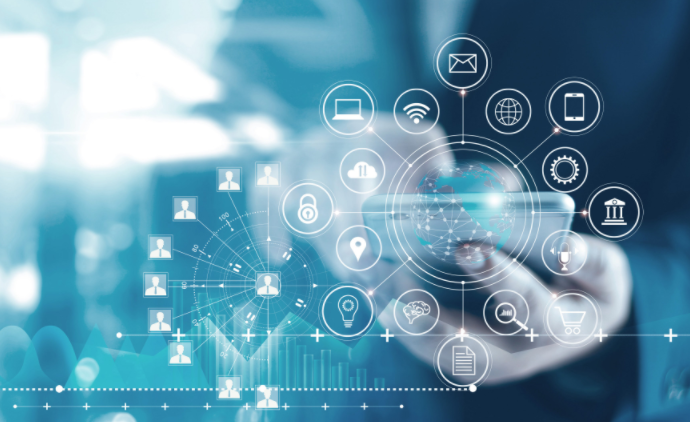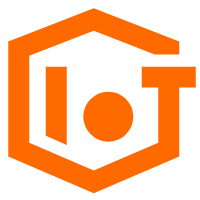What is Web 3.0? What is the difference between Web 3.0 and the metaverse? What do I need to do to prepare for the next version of the web? These are some of the questions businesses, organizations and individuals need to consider as momentum for change builds.
Web 3.0 will ultimately emerge from – and likely accommodate – a range of competing philosophies and interests involving various stakeholders, including governments, international organizations, businesses, individuals and incumbent and challenging web players.
Where are we today and how did we get here? Web 3.0 – branded by some commentators as the ‘Spatial Web’ – builds on the browser-based document access via HTML pages that characterized Web 1.0 and app development, content creation, social media and e-commerce that exploded during Web 2.0 (it is worth reiterating here the difference between the internet – the network of millions of connected computers – and the web – one way of accessing information over the internet). The Spatial Web Foundation – a non-profit organization that aims to ‘develop and maintain the ethical standards of the Spatial Web’ – describes the Spatial Web as a ‘hyper-integrated, contextually aware and ethically-aligned network of humans, machines and AI.’
The journey towards Web 3.0, has already taken some twists and turns. Sir Tim Berners-Lee, credited as the founder of the World Wide Web, believed we would adopt the ‘Semantic Web’ – a model described by management consulting firm Deloitte as “centering on the capability of machines to read and interact with content in a manner more akin to humans.” The World Wide Web Consortium (W3C) – a body led by Berners-Lee that coordinates the development of web standards – describes the Semantic Web as a ‘web of data’ based on technologies that enable individuals to create data stores, build vocabularies and write rules for handling data. While the Semantic Web appears to be in abeyance for now, some of its work and principles are integral to Web 3.0.
A fascinating point of debate over Web 3.0 is who will own and control this next version of the web? Some commentators point to the role of decentralization, distributed ledgers and blockchain in returning control and ownership of data to users, while others question the involvement of venture capitalists in Web 3.0 projects.
For its part, the Spatial Web Foundation is highly optimistic about the power of the Spatial Web to realize the potential of technologies such as AI, augmented reality and virtual reality (AR/VR), the Internet of Things (IoT), blockchain, robotics and 5G, provided universally standardized formats, languages and protocol standards are established.
The Foundation argues in the Spatial Web, users may own digital property and data – including retaining control of data when they leave a service provider – and choose with whom to share data, while a decentralized digital identity will help eliminate traditional personal data exchange and verification processes when undertaking transactions. Interoperability will ensure users and assets can move seamlessly across environments, while real-time validation and certifiable records will help establish trust.
The technology stack underpinning the Spatial Web will, according to the Foundation, include a spatial interface tier, incorporating peripherals such as AR/VR headsets and smart glasses; a physical interface tier, featuring computing embedded into objects such as sensors, wearables, robotics and other IoT devices; a cognitive logic tier that models and mimics human thought processes, enabling smart contracts, machine learning and deep learning, neural networks, AI and quantum computing, and a distributed data tier featuring devices and applications that participate in blockchains, distributed ledgers, edge and mesh computing.

For many people, the focus on Web 3.0 has sharpened with the emergence and extensive promotion of the metaverse. However, while the two concepts are closely linked, they are not (yet) interchangeable. The metaverse aims to connect people and objects in the virtual world to reality – integrating digital and physical worlds, digital lives and social lives, digital economies and real-world economies, digital assets and physical assets, and digital identities and actual identities. Web 3.0/The Spatial Web incorporates many similar features and characteristics but is distinguished – in some quarters – by its focus on decentralization, trustless (by eliminating the need for centralized authorities), permissionless (open to the public rather than requiring permission to join) and individual data ownership.
So how does your business need to prepare for Web 3.0/the Spatial Web? AI and machine learning will play a critical role in Web 3.0, with natural language processing (NLP) – AI-based technologies that enable computers to learn, understand and produce content in human languages – in particular enabling a wide range of applications in this new environment. For example, NLP can help an organization undertake more effective social listening – tracking social platforms for mentions, conversations and insights related to themselves or their products – and respond faster and more effectively. Furthermore, AI and machine learning can help deliver the personalized, intuitive experiences that customers demand in the modern Web 3.0-powered marketplace.
Integrating blockchain into your environment is also key to success in the Spatial Web/Web 3.0. The logic and data of applications running in the blockchain are immediately more transparent and traceable, expediting the identification of errors or misuse, while the complexities that bedevil simple processes such as travel insurance claims can be all but eradicated. In addition, supply chain inefficiencies can be stamped out and sensitive data such as medical records protected more effectively.
With a cloud-based Blockchain as a Service solution, businesses can build a stable blockchain environment while reducing operational and maintenance costs, with features such as end-to-end traceability and anti-counterfeiting helping minimize supply chain issues, secure data storage and data sharing minimizing provenance disputes in the sharing economy and ownership records and transaction enabling the exchange of value between participants.
Meanwhile, edge computing – combined with the proliferation of faster 5G networks – is also a catalyst and enabler of the Spatial Web/Web 3.0. With data collected, processed and analyzed at edge nodes rather than centrally, organizations can deploy and scale IoT solutions and boost their AI and machine learning capabilities.
The Spatial Web/Web 3.0 features extensive opportunities for your business or organization to modernize and accelerate while enhancing the customer experience through intelligent technologies.
Deloitte points to the fact many organizations are deploying Spatial Web technologies to augment existing capabilities, such as IoT to enable predictive maintenance that delivers improvements in equipment performance and lifespan while reducing costs, and augmented reality to assist with field service capabilities. ‘Digital twins’ delivered through Web 3.0/the Spatial Web and created using cameras, networks and sensors that feed live virtual models can help manufacturers, including enabling them to test and validate production decisions, visualize products and connect systems and processes.
A cloud provider with proven products and services that enable Web 3.0/the Spatial Web can help ease the transition to and help derive value quickly from this new model. Alibaba Cloud products – including Blockchain as a Service, Machine Learning Platform for AI and Link IoT Edge – can help businesses confidently embrace this new reality.
Speed, reliability and a global presence: how to choose the right CDN
What is DeFi and How is AI Creating New Opportunities In the Sector?
30 posts | 2 followers
FollowAlibaba Cloud Community - July 12, 2022
Alibaba Cloud Community - July 27, 2023
Alibaba Clouder - April 29, 2020
Uday Tank - November 15, 2022
Alibaba Clouder - July 11, 2018
Alibaba Clouder - May 31, 2018
30 posts | 2 followers
Follow IoT Platform
IoT Platform
Provides secure and reliable communication between devices and the IoT Platform which allows you to manage a large number of devices on a single IoT Platform.
Learn More IoT Solution
IoT Solution
A cloud solution for smart technology providers to quickly build stable, cost-efficient, and reliable ubiquitous platforms
Learn More Link IoT Edge
Link IoT Edge
Link IoT Edge allows for the management of millions of edge nodes by extending the capabilities of the cloud, thus providing users with services at the nearest location.
Learn More LedgerDB
LedgerDB
A ledger database that provides powerful data audit capabilities.
Learn MoreMore Posts by Iain Ferguson